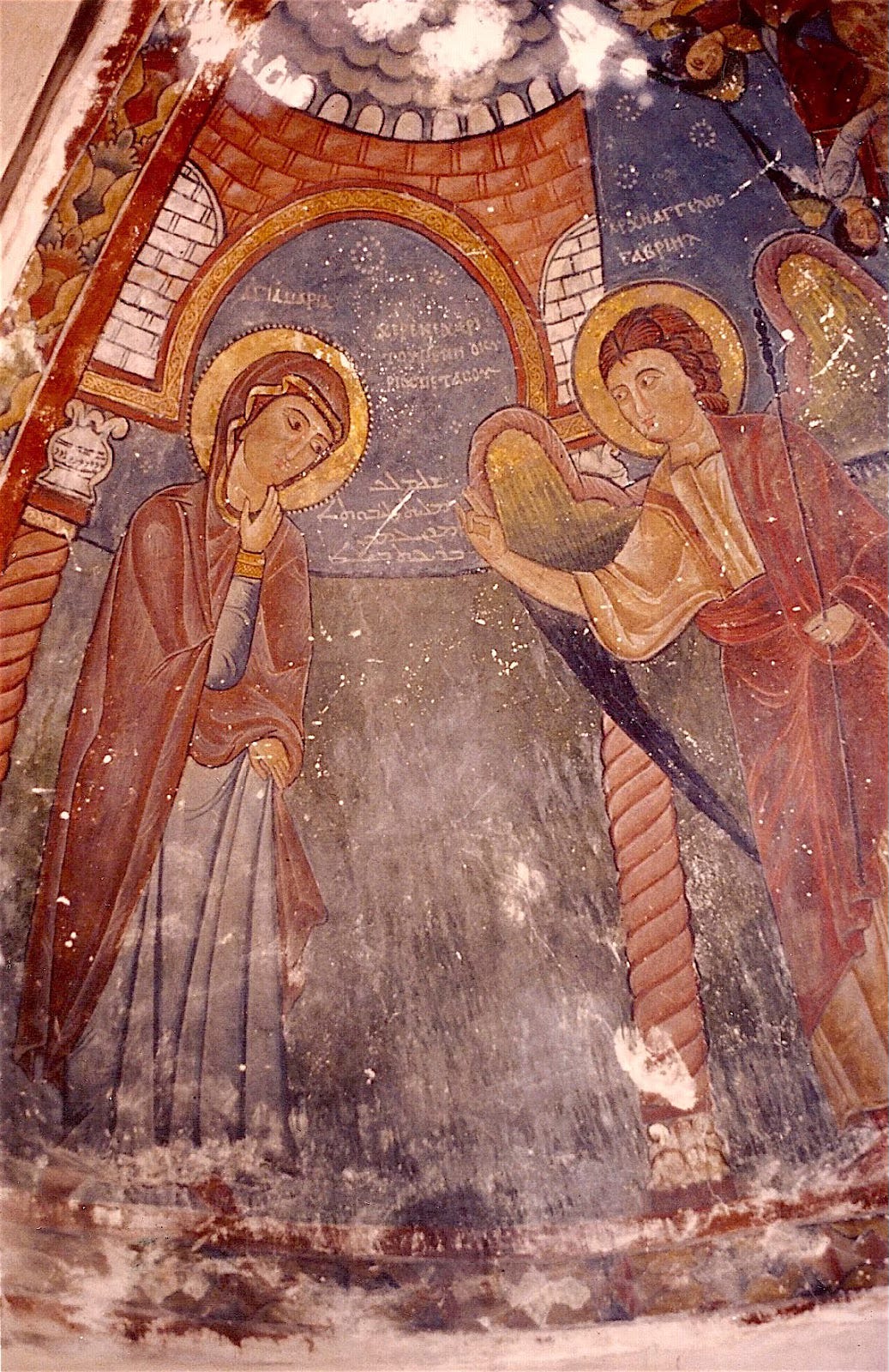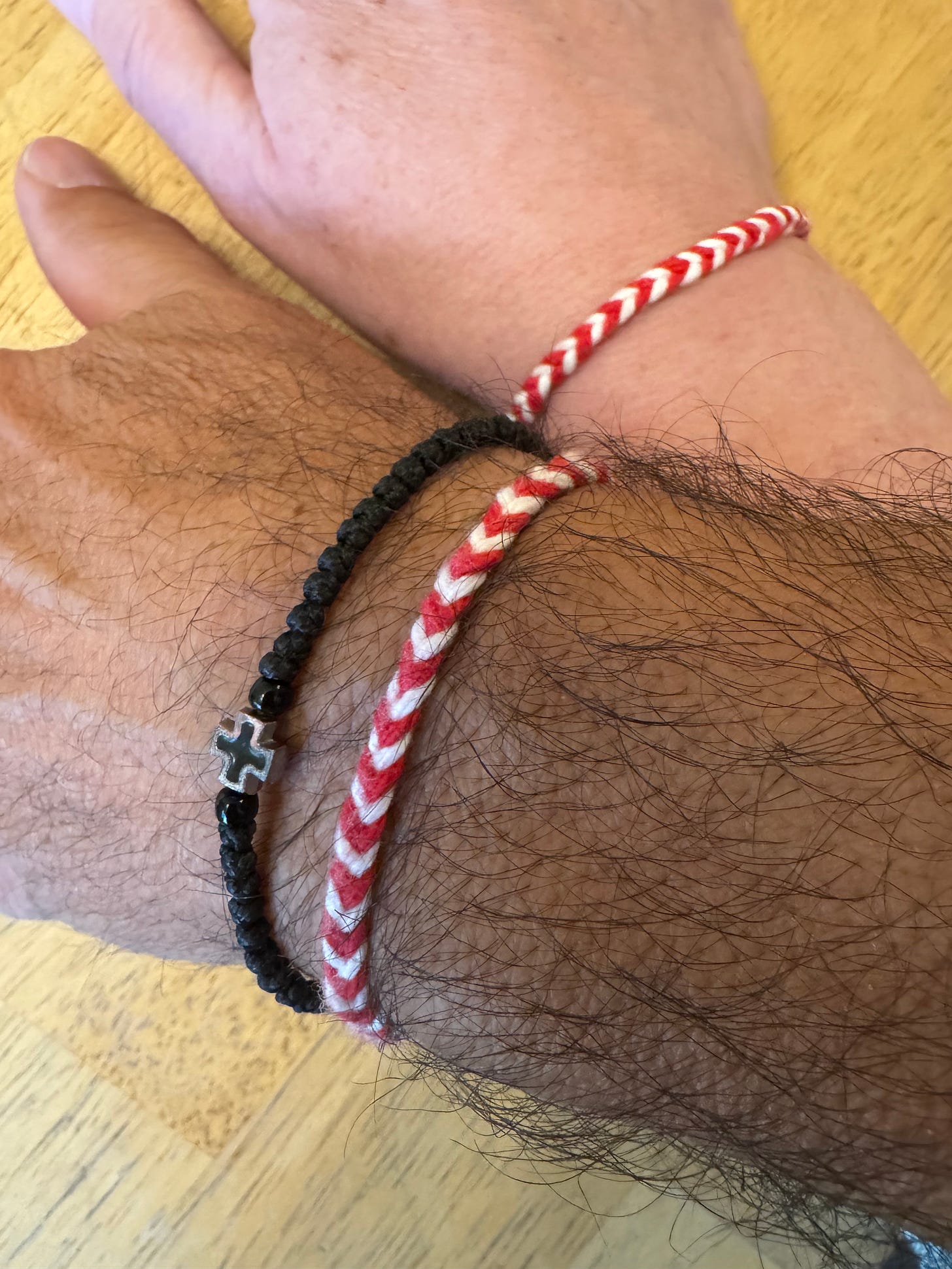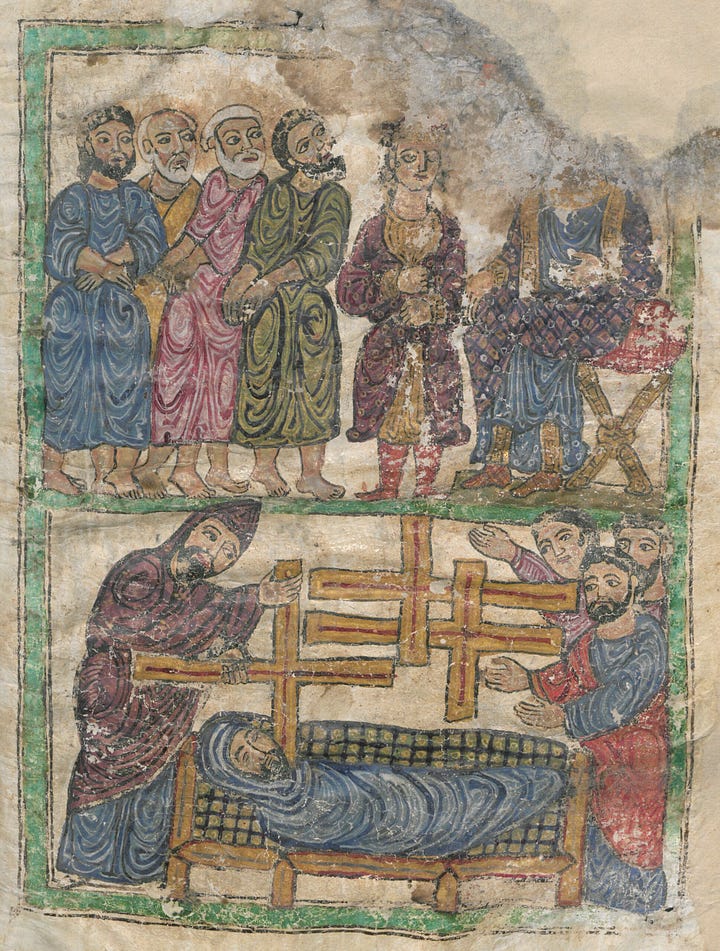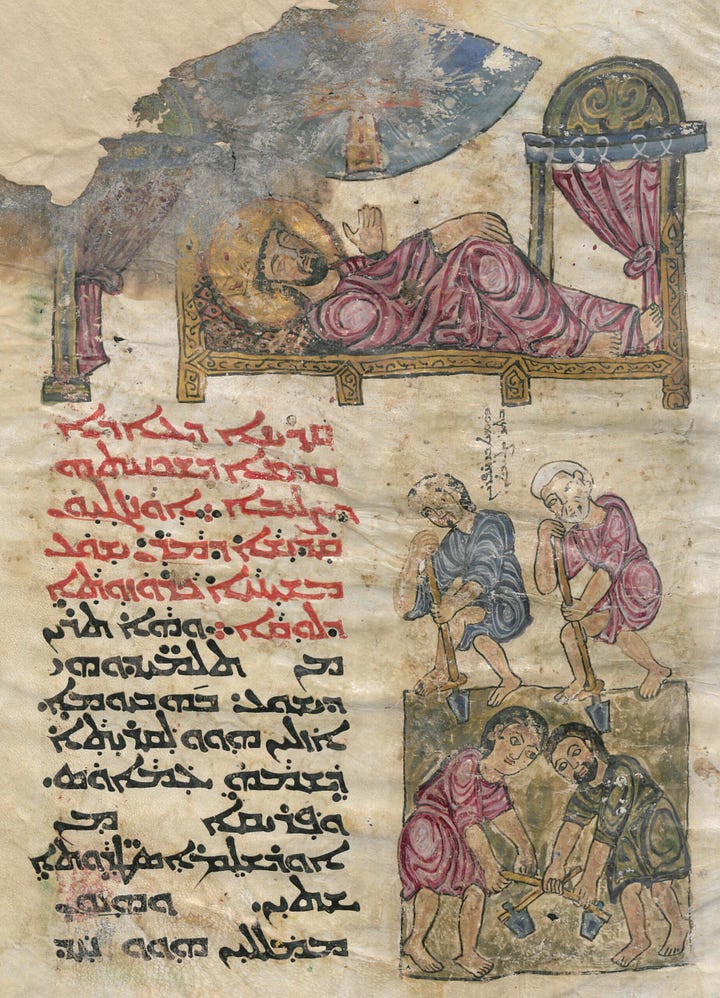I am profoundly rejoicing today for three reasons.
The first —and by far most important— reason is that today, the Christian world celebrates the annunciation to the Yoldath Aloho, the Theotokos, the holy Virgin Mary by the archangel Gabriel, which we can read in the Gospel of St. Luke 1:27:26-38:
26 In the sixth month, the angel Gabriel was sent from God's presence to Galilee, to a town named Nazareth, 27 to a virgin engaged to be married to a man named Joseph, of the house of David. The virgin's name was Mary. 28 The angel entered her presence and said to her,
"Shlama,' you who are greatly favored; our Lord is with you, who are blessed among women." 2 When she saw him, she was very troubled at his statement and pondered what this greeting might mean. 30 "Do not be afraid, Mary," the angel told her. "For you have found favor with God. 31 Look, you will conceive and give birth to a son, and you will name him. Jesus. 32 He will be great and will be called Son of the Most High, and the Lord God will give him the throne of his father David.
33 He will reign over the house of Jacob forever and of his kingdom there will be no end." 34 Mary asked the angel, "How can this be, since I have not been with a man?" 35 The angel answered her, "The Holy Spirit will come and the power of the Most High will overshadow " you.
For this reason, he to whom you will give birth is holy and will be called the Son of God." 36 Look, even your relative Elizabeth is expecting a son in her old age, and she who was called barren is in the sixth month of her pregnancy.' 37 For nothing is difficult for God." 38 Mary said,
"Behold, I am the Lord's handmaiden. May it be to me as you have said." Then the angel departed from her presence.
- Luke 1:26-38, Syriac-English New Testament (Peshitta)

In my evangelical days, this day would have not hit my “radar screen of awareness” at all. Outside of Easter, Pentecost, and Christmas, evangelical Christians do not usually celebrate these liturgical commemorations so richly and fully represented in other parts of Christendom.
And yet, this day of all days should be so essential to believers as it represents the incarnation of our Lord and Savior Jesus Christ. In the words of the Greek Orthodox hymnology I heard last night in my husband’s church (he is Greek Orthodox, as you probably know by now): “Today is the summary of our salvation, and the revelation of the age-old mystery. For the Son of God becomes the Son of the Virgin, and Gabriel announces the good news of grace. Therefore, let us join him and cry aloud to the Theotokos: “Rejoice, Maiden full of grace! The Lord is with you.”
Needless to say, in the Syriac Orthodox Church, the Annunciation to the Virgin is also celebrated liturgically. Indeed, it is so important that the Holy Liturgy (Qurbono) must be held on this day even if March 25th happens to be Good Friday! Having said that, the reality in the new homelands of the Syriac Orthodox faithful may not allow for this. At my church in Phoenix, e.g., the celebration is moved to Sunday’s Holy Qurobo, as we do not have a church building of our own to meet in mid-week. Shlomlech bthulto maryam (Ave Maria) praises the Virgin who will bring forth the Son of God.
Another qolo (hymn) sung today:
As Mary stood in prayer, pleading with God, an angel of fire, clothed in a flame, descended to her.
And said to her: Peace be with you, you who have become worthy to become a castle for the King's Son who will now take up His abode in you. Put off your poverty.
For the rich shall rest in your bosom to satisfy the hunger of the peoples.
Interestingly, the Syriac Orthodox Church traditions differ a bit depending on where the diaspora group originated from. One example for the Feast of Annunciation is the Siboro, a wristband twisted or tied together of white and red yarn. This custom is only known by the families from Tur Abdin. My Iraqi brethren at my church in Phoenix don’t follow this tradition.
The red yarn represents Christ’s humanity, while the white yarn symbolizes Christ's divinity. Both form a unity of the two natures, showing one nature, unmixed, untransformed, unseparated, and undivided.
Here are my husband and my Siboro bands. I made them myself, as my church here in the US does not follow this tradition.

Another tradition from Tur Abdin happens the night before the feast, when a young girl from each family prepares unleavened dough. Miraculously, the dough rises on its own, symbolizing Mary’s conception through the power of the Holy Spirit. Grains and salt are placed beside the dough as a blessing.
Standing at the front door of the house, the girl recites the Lord’s Prayer while neighborhood girls join in singing the hymn "Eno No Lahmo d-Haye." This dough is then taken to the priest, who shapes it into a ball and imprints it with a stamp symbolizing the Eucharistic bread. Once baked, the bread—called Buchro—represents Jesus, the Firstborn. Each family receives a small bag containing the dough that serves as starter dough for the following year.
The faithful from Tur Abdin in southeast Turkey have an evening before the Feast where the women spin these bands and where the young girls (virgins) of the church make new yeast dough. Both the bands and the dough are blessed by resting under the Gospel book and are distributed to the faithful the next day.
Now on to my second reason for rejoicing today: The new Catholicos of the Syriac Orthodox Church of Antioch was enthroned today! Axios, Axios, Axios to His Beatitude Mor Baselios Joseph I! He is responsible for all the many, many faithful in India. Our Patriarch, His Holiness Moran Mor Ignatius Aphrem II, together with all the Holy Synod were in Lebanon for this beautiful ceremony. I have to say, what moved me to tears was when H.B. Mor Baselios Joseph I was reminded by our Patriarch that he will always be responsible to hold to the Truth once delivered. May the Holy Spirit always ensure this.
This is not my video, but I wanted to share the beautiful event with you. May the Lord always teach, guide and bless His Beatitude.
And now for the third reason to rejoice: Tomorrow is mid-Lent, where the Elevation of the Cross is celebrated. The liturgy of this feast day in the Syriac Orthodox Church recalls the story of Helen, mother of Emperor Constantine, who went to Jerusalem to look for the Cross.


This qolo (hymn) is sung:
Helen went down to Jerusalem,
from Rome, the city of the kings,
to bow down to the Cross.
She took hold of all the Jews and asked:
"Come and show me the place of the Cross."
They replied and said to her:
"We have a great man.
If you take hold of him
he will show you the place
In which the Wood of the Cross is placed."
What a time of rejoicing for the Christian!
I have to admit that I never felt such immense joy as I do these days when these liturgical feast days roll around. I appreciate my faith in God the Father, God the Son, and God the Holy Spirit so much more deeply than I have my entire life before finding Orthodoxy. I invite you to discover the riches of our faith.




In our parish we celebrate the Annunciation in the Divine Liturgy on Sunday and each of us receives the Suboro, although they are not as elaborate as the one you made.
Thank you!